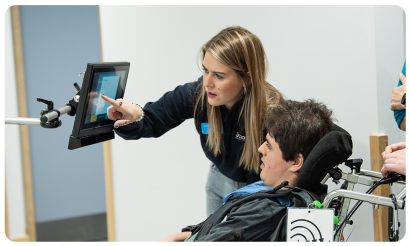
Live workshop dates for 2024
Interactive live workshops have a new home, joining a range of self-led Grid and AAC courses on Smartbox Academy. Initially, we’re launching with our two most popular workshops, three-hour sessions made for beginners, costing £25 / $30 / €30: Read on to find out what you’ll learn in both workshops, a date to suit your schedule and details on how to book. It’s free to sign up for Smartbox Academy, you can enrol below. Anyone who wants to start using Grid, our flagship AAC software for people with disabilities. You may be a professional looking to get started with symbol and text AAC or a communication partner eager to help set up a device. 29 April 2024 – 5pm CT / 6pm ET / 8am AEST 25 June 2024 – 4pm BST / 10am CT / 11am ET Complete beginners, looking for strategies to help an AAC learner communicate at home or in school. Perhaps you are a family member overwhelmed by the quantity of information online. If you’re unsure where to start – this is the place. 20 March 2024 – 4pm CT / 5pm ET / 8am AEST 23 May 2024 – 4pm BST/ 10am CT / 11am ET 17 Sept 2024 – 4pm BST / 10am CT / 11am ET Watch videos on how to set your time zone and how to book a workshop or follow the step-by-step guide below. Hover over your username → ‘my info’ → ‘time zone’ Look out for courses with titles starting with ‘Live Workshop’ (available times in description) Select from various payment options. Select from various payment options. Find the workshop on your Learning Dashboard – once in the course, register for your preferred date and view instructors. Find it in the right column on ‘My dashboard’ to join the Live Workshop – use the ‘Export’ button to add it to Outlook and other services. We want you to access all your Smartbox training in one place. On Smartbox Academy there are more ways to deliver high-quality training, including live online workshops, self-lead e-learning courses and the ability to combine both. Our software is used by people with disabilities from all over the world. We have solutions for everything from getting started with AAC to controlling your PC and the world around you.New online workshop dates are now live
Getting Started with Grid
Who is this course for?

This training will cover
Workshop Outcomes
Workshop dates
Simple AAC
Who is this course for?

This training will cover:
Workshop Outcomes
Workshop dates
How to book
1. Enrol and set your time zone.
2. Browse workshops in the Course Catalogue
3. Click ‘Get this course’ and checkout
4. Open and ‘Start course’ immediately to register for your chosen date.
5. Check your calendar on the day
6. Why have we switched from using Eventbrite?
Try Grid for free